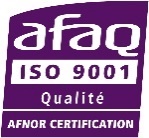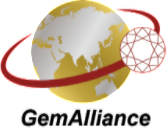
Coloured stone identification
IDENTIFICATION REPORT
Unique reference number
The Laboratoire Français de Gemmologie gives a unique reference number to each item submitted for examination. This number identifies the item at each stage of analysis. When a stone has already been seen and comes back after a re-cutting or a preliminary examination, a new number is assigned to it.
Date
The date of the report is the date when analyses are completed and when the report is issued.
Nature
The Nature indicates the variety of the stone. On this specimen, ruby belongs to the same family as sapphire: corundum.
Shape, cut and dimensions
The shape, cut and dimensions describe the external appearance of the stone. When you submit a piece of jewellery with several stones, or lots, we indicate the diametrical variation of the lot.
Weight
The weight (mass) of the stone is shown in carat weight with a precision of two decimals. The third 9 after the decimal point is rounded up to the nearest hundredth. For instance: 0.9990 will be shown as 1.00 carat, 0.9989 shown as 0.99 carat. If the item is a jewel set with stones, then it is weighed in grams.
Colour
The colour gives an indication of the hue (on our specimen: red), the tone if necessary (for instance : orange) and of saturation (here : vivid).
Instruments scientifiques
Dans un souci de transparence, le LFG vous indique par quels instruments scientifiques votre pierre a été testée. Vous trouverez la description et l’utilité de chaque machine dans notre section >> Notre matériel
Identification
The Identification refers to the type of stone which has been analysed
Nature
La nature indique la variété de la pierre. Sur ce specimen, le saphir vient d’une famille commune au rubis : les corindons.
Treatments
According to the French Decree no. 2002-65, published on the 14th of January 2002, on trade in gemstones and pearls, treatments should be disclosed either with the word “treated” or with the information on the type of treatment applied, when the stone has undergone, as the case may be, irradiation treatment, treatment by laser, dye, surface diffusion, filling, possibly as a residue of a heat treatment, solidified colourless foreign matter in external cavities that present reflection breaks visible under the 10 x loupe, or by any other laboratory method that alters their appearance, colour or clarity.
Comments
It is in the comments section that the LFG provides additional information related to origin or treatments. For example, impregnation with a colourless fluid substance, heat treatment or bleaching without the addition of colouring products or varnish.
Photography
A high resolution photography shows the stone on its arrival in the laboratory (dimensions in the photo are not binding but as representative as possible). The stone might have been re-cut or changed colour since it left our premises.



